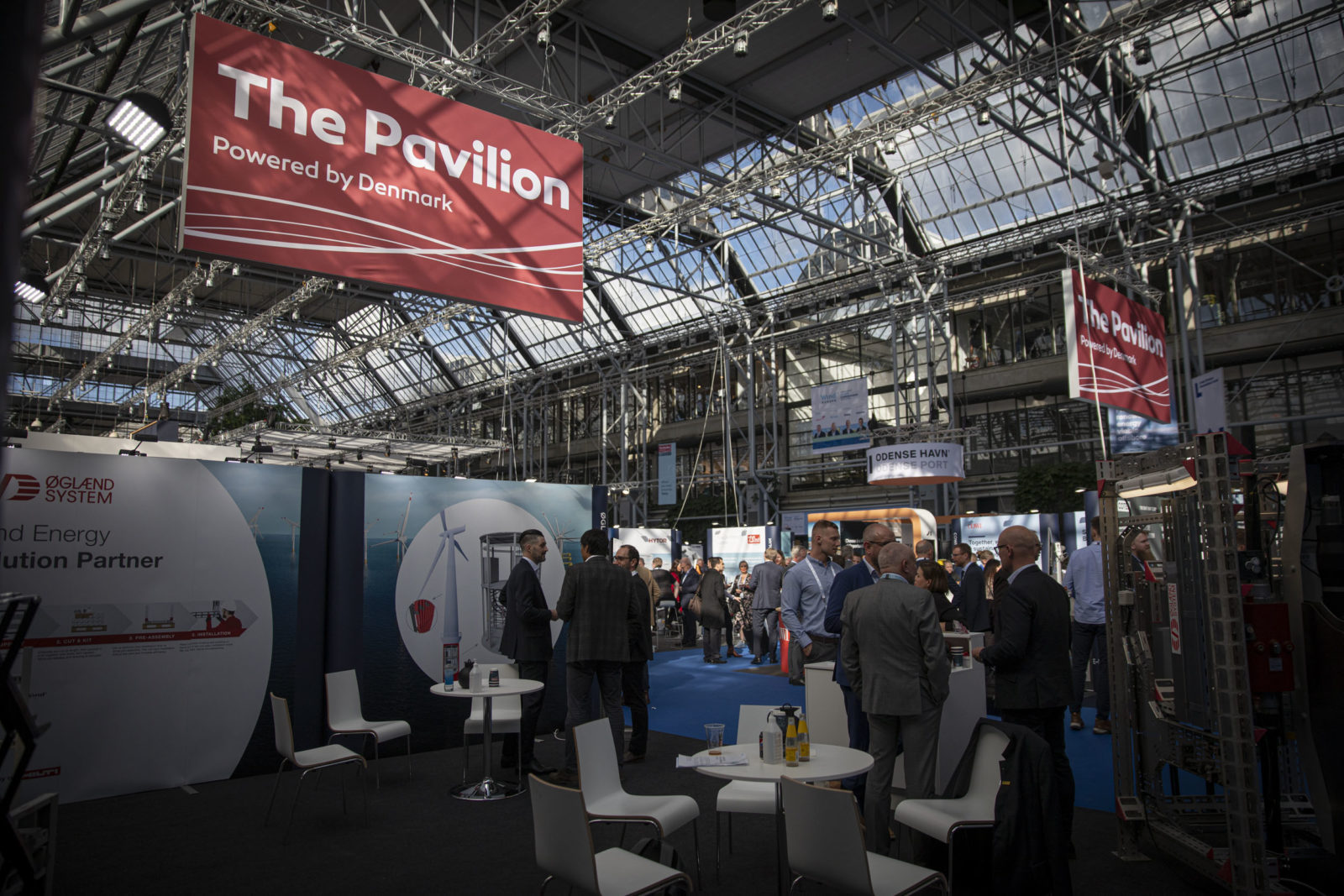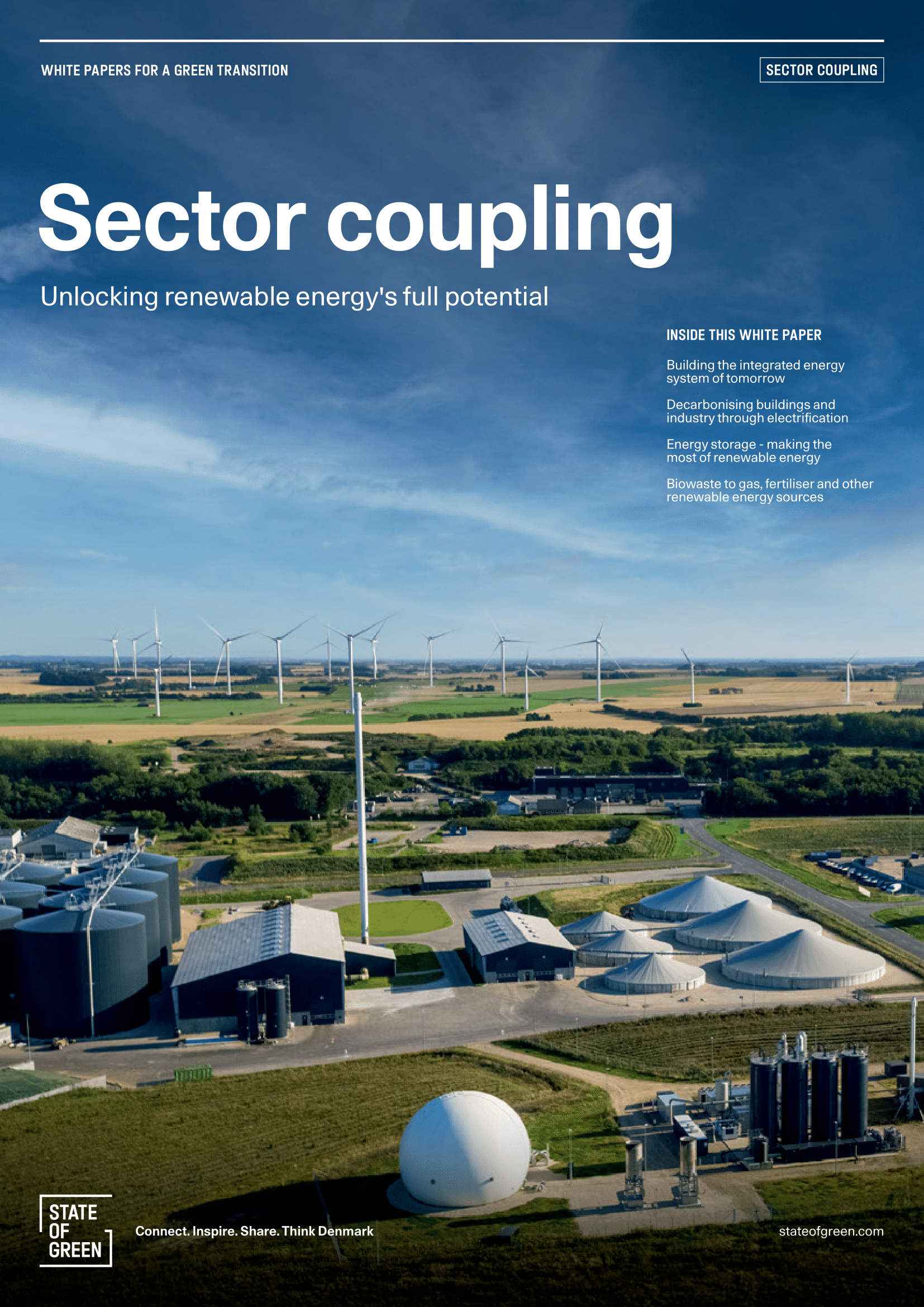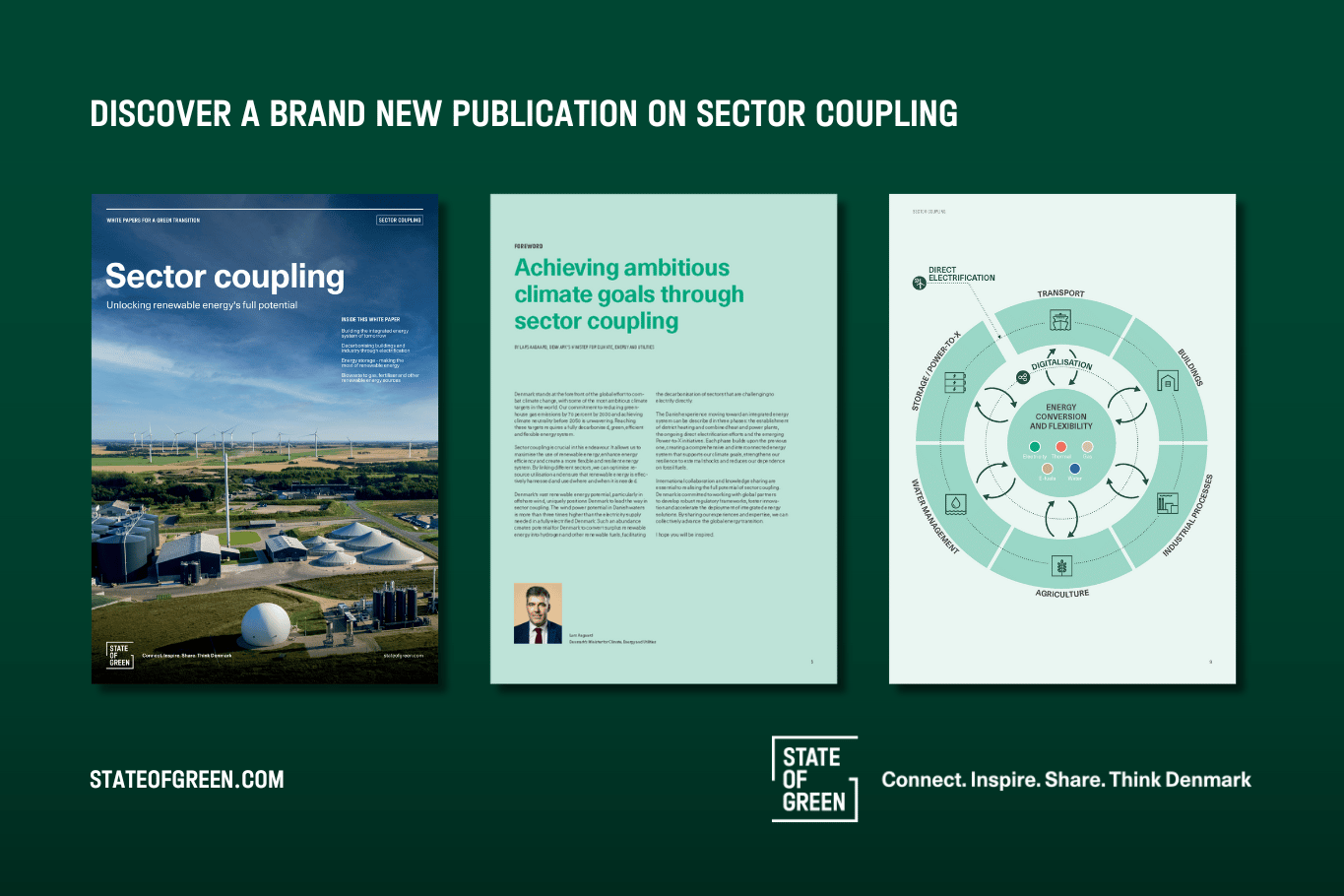Discover sector coupling
Sector coupling unlocks the full potential of renewable energy, driving decarbonisation and climate action. Explore key sectors and solutions behind it in our new white paper.
Discover the publicationNews
Sector coupling
District energy
District heating
+1

Photo credit: Danish Energy Export


Sector coupling unlocks the full potential of renewable energy, driving decarbonisation and climate action. Explore key sectors and solutions behind it in our new white paper.
Discover the publicationOn 23 October, stakeholders from across the energy sector gathered at the Hydrogen Technology Expo in Hamburg, where State of Green hosted a panel discussion at the Pavilion of Denmark to launch the new white paper Sector Coupling – Unlocking Renewable Energy’s Full Potential. The event, co-hosted with the Embassy of Denmark in Berlin, the General Consulate of Denmark in Hamburg, the German-Danish Chamber of Commerce, and Danish Energy Export, focused on how excess heat from Power-to-X (PtX) processes can be utilised for district heating, a key component of integrated energy systems.
Also read: New white paper: Unlocking the potential of renewable energy through sector coupling
As global renewable energy adoption accelerates, the concept of sector coupling has emerged as a critical tool in efficient energy planning. It involves breaking down traditional silos between sectors such as electricity, heating, cooling, transport, and industry, allowing renewable energy to flow seamlessly across them. Power-to-X (PtX), a technology that converts electricity into other forms like hydrogen or synthetic fuels, plays a pivotal role in this transformation.
Converting renewable energy to, for example, green hydrogen, generates a vast amount of exess heat. Instead of viewing it as waste, it can be effectively captured and repurposed for district heating, thus boosting energy efficiency, reducing emissions. This holistic approach not only optimises the use of renewable energy but also contributes to a more resilient and sustainable energy system. Denmark, with its advanced district heating systems and expertise in integrated energy solutions, offers a model for how sector coupling can accelerate the green transition.
Also read: Doubling energy efficiency progress through sector coupling

Discover the hidden potential of sector coupling in this white paper, offering valuable insights and practical solutions that can inspire and guide global efforts towards a green and sustainable transition.
Explore the publicationThe discussions focused on the potential for sector coupling solutions as part of Germany’s forthcoming heat planning, in particularly, the utilisation of excess heat from PtX in combination with district heating. Andreas Koch, Team Leader in Department for Districts & Cities at the German Energy Agency (DENA), and Alexander Kotschi, Country Market Director for Energy at Ramboll Deutschland, joined a panel moderated by State of Green’s Director, Finn Mortensen. They explored how Denmark’s decades-long expertise in district heating and smart energy planning could support Germany’s ambitious goals under the new Heat Planning Law, which mandates that 30% of heat in networks must come from renewable sources or unavoidable waste heat by 2030, rising to 80% by 2040.
Germany’s collaboration with Denmark, which has a well-established district heating system, is seen as a valuable partnership. The two countries are working together to share experiences and solutions, particularly around creating favourable regulatory conditions and improving energy efficiency in buildings and industry. These cross-border efforts could play a key role in advancing Germany’s heat planning and broader energy transition.
The panel also addressed the growing interest from the private sector in integrating PtX technologies into district heating systems. As countries strive to meet EU decarbonisation goals, sector coupling presents an opportunity to improve the economic viability of hydrogen production and other renewable energy technologies. By reusing excess heat from PtX processes, companies can not only enhance energy efficiency but also reduce operational costs.
The discussion underscored that international partnerships, such as those between Denmark and Germany, can be key to accelerating the deployment of these integrated energy systems, helping both countries to meet their long-term sustainability goals. The insights shared during the panel reflect the growing recognition that sector coupling can play a vital role in the energy transition, offering a more efficient and interconnected approach to energy planning.
Related content: Heat planning and sector coupling in district heating
The reuse of excess heat from Power-to-X and other processes for district heating brings several benefits. Firstly, it enhances overall energy efficiency by making use of energy that would otherwise be wasted. This not only helps to reduce emissions but also provides a more sustainable heating solution for urban areas. By integrating renewable energy into district heating systems, cities can lower their carbon footprints while ensuring a stable and cost-effective supply of heat.
Additionally, sector coupling supports the broader energy transition by creating synergies between different sectors. It enables more flexible use of renewable energy, contributing to the decarbonisation of both electricity and heating systems.
As the discussions at the event made clear, sector coupling presents an important opportunity for both Denmark and Germany to enhance their energy planning and efficiency. By focusing on the practical application of excess heat and integrated energy systems, both countries can contribute to the wider European goal of reducing emissions and increasing the use of renewable energy.
The white paper, Sector Coupling – Unlocking renewable energy’s full potential, provides further insights and examples of how sector coupling can be implemented in practice. It serves as a useful resource for stakeholders looking to explore these solutions.
For more information on the potential of sector coupling, dive into the white paper below.
Perspective
Sector coupling
+9
Perspective
Sector coupling
+2

Discover the hidden potential of sector coupling in this white paper, offering valuable insights and practical solutions that can inspire and guide global efforts towards a green and sustainable transition.
solutions
Combined heat and power production
+6